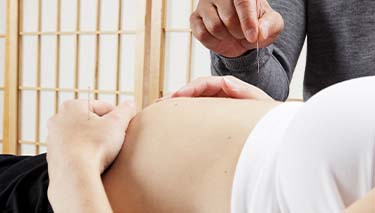Pregnancy used to be seen as a time when women needed to stop their exercise regimes. This was based on concerns about possible negative effects on the baby and the risk for mothers of overexerting themselves. But now we know that regular, moderate exercise over the term of a normal pregnancy is not only beneficial for mothers but for their babies as well.
It makes good general sense to check with your doctor or maternity care provider to see if it's safe for you to continue exercising, or start a new pregnancy exercise programme.
Michelle Bridges: Exercise during pregnancy
How does the baby hold on?
Many mothers worry that exercising may have a negative impact on how securely their baby stays attached to the uterine wall. Visions of their baby holding tightly onto the umbilical cord are enough to scare even the most relaxed mother. However, there is no evidence to support this concern. Babies are designed to ensure their survival and only in abnormal and extreme circumstances is exercise likely to cause problems leading to miscarriage or premature birth. The unfortunate truth is that if a mother is going to miscarry, it will happen anyway, no matter how much exercise she is doing.
Benefits of pregnancy exercise for mothers
- Pregnancy hormones relax ligaments and muscles, which is essential for delivery. But this also increases the risk of injury to the pelvic joints. Core strengthening exercises help to reduce the likelihood of risk to these joints.
- Exercise during your pregnancy will help you to maintain a healthy weight gain
- Exercise will help you to feel energised, reduce stress, stabilise your mood and may even improve your sleep
- It may help to reduce the risk of developing Gestational Diabetes.This is because exercise helps to maintain healthy weight.
- Pregnant women who exercise tend to have shorter labours and are less likely to need birth intervention.
- Helps to reduce back pain and strain.
- Helps to prevent and relieve constipation.
- Pregnancy exercise helps with post partum recovery and a return to pre-pregnancy weight range.
- Pelvic floor exercises are beneficial in reducing the likelihood of delivery complications. They also reduce the risk of uterine and bladder prolapse.
Benefits of pregnancy exercise for babies
- Improved oxygenation and blood flow via the placenta to the baby.
- Healthier weight range at birth. This is because there is less likelihood of mothers developing Gestational Diabetes - babies benefit as well.
- Doing group exercise with other pregnant mothers can help with developing support networks and friendships. If these relationships are maintained, there is a potential for reducing the chances of isolation and depression after the baby is born.
When shouldn't I exercise during my pregnancy?
If you experience any of the following symptoms:
- Vaginal bleeding, contractions, your membranes have ruptured or you are showing signs that your labour may have started.
- If you have a headache, your blood pressure is elevated; you have generalised swelling or have been diagnosed with Pre-eclampsia.
- If you have heart disease or problems with your blood pressure being too low or high.
- If your baby is not growing as well as it should be or if baby's growth is retarded. If you are not gaining an adequate amount of weight through your pregnancy and have been advised to restrict your exercise and conserve energy.
- If you feel faint, light headed or generally unwell.
- If your baby is not as active as it has been or you are worried about its movements.
- If you have a sense that you shouldn't be exercising then you need to stop.
Remember, check with your doctor or maternity care provider if you are concerned about any risks to you or your baby from exercising.
What exercises to avoid
- Exercise which could potentially strain or stretch your ligaments. The hormone relaxin works beautifully on relaxing the pelvic ligaments, but sometimes it works too well. Lifting weights can be risky, particularly beyond the second trimester. Likewise, any general heavy lifting needs to be avoided if possible.
- Horse riding, skiing, squash or vigorous ball and racket sports, gymnastics and ice-skating can all be risky.
- Contact sports such as football, netball and basketball can all pose problems as well, particularly in the third trimester when pregnancy changes the mother's centre of balance making falls more likely.
- Sudden, intense and rigorous exercise programmes are best avoided during pregnancy. The ideal way to go is to start slow and build up gradually. You are much better doing this and avoiding an injury which could mean you are immobile for weeks.
- Avoid doing exercises which feel like a chore. Aim to find something you like and which you're more likely to keep up. Try for 30-60 minutes of enjoyable, fun exercise every day.
- Overheating or becoming dehydrated. Any exercises which cause your body temperature to increase to the level of discomfort need to be avoided.
- Avoid exercising when the weather is very hot or humid or within steam rooms or saunas.
- By the third trimester of pregnancy, no more than 3 sessions of vigorous exercise a week are recommended.
- Avoid becoming over fatigued and exhausted. Your body is working very hard in growing and supporting your baby. All the energy you have needs to be divided between your normal every day metabolism, daily activities and your pregnancy.
Types of pregnancy exercise
Aerobic Exercise
Any exercise which makes the heart and lungs work harder is classified as aerobic exercise. Generally aerobic exercise uses large muscle groups in the body.
- Walking quickly, riding a bike, swimming and stair climbing are all great examples of aerobic exercises recommended during pregnancy. You may find it more comfortable to sit on a bike with a gel seat or well designed female seat.
Swimming offers one of the best forms of ante-natal exercise. Towards the end of pregnancy particularly, when the sheer weight of the baby and its supportive structures can be very wearying. When swimming, a mother's weight is supported by the buoyancy of the water and this is a great option for relieving muscular strain. A water aerobics class for pregnant women is a good way to stay fit and network with other pregnant women. It is also good for women who may otherwise feel a little self conscious of their size and wearing a swimsuit.
Anaerobic exercise
Is exercise which is based on resistance and uses the energy within tissues and muscles, rather than the oxygen you will be breathing in. Generally anaerobic exercises the muscles and improves a person's flexibility.
- Yoga, weight training, Pilates and strength training are all useful during pregnancy.
- Stretches which involve the arms and legs, back and spine, trunk and neck.
- Pelvic floor exercises, also known as Kegel's exercises. It is important to start doing these from the start of pregnancy, if not before. The pelvic floor acts as a kind of hammock which supports all the pelvic organs to sit in their correct places.
Things to remember
- Wear a supportive, firm bra to stop your breasts from bouncing and creating excess strain. Some women wear two bras when they are jogging and claim this reduces their discomfort.
- Wear cool, comfortable clothing which is designed to stretch and move with you. Cotton, bamboo and hemp fibres are more absorbent and don t restrict air flow.
- Invest in a good pair of sports shoes. Your feet are affected by the hormone relaxin well when you are pregnant. You may find you go up a shoe size or one foot becomes larger than the other by the end of your third trimester.
- Keep exercise fun and then you'll be more likely to maintain it. Arrange to go to a class with a friend, your partner or your older children. See opportunities to move and maintaining some form of physical activity in a positive light.
- Avoid exercises which require you to stand still for long periods of time while you wait your turn. This leads to pooling of blood in the lower limbs and swelling.
- Trust your body if it's telling you to slow down. You are the best judge of your own limits and tolerance. Slow down when you need to and have a rest.
Check the Sports Medicine Australia Fact sheet for information on pregnancy related exercise.
For more information see Pregnancy Care.
Last Published* May, 2024
*Please note that the published date may not be the same as the date that the content was created and that information above may have changed since.





















